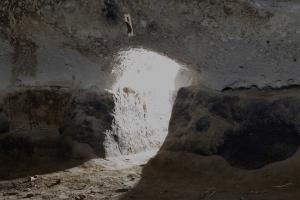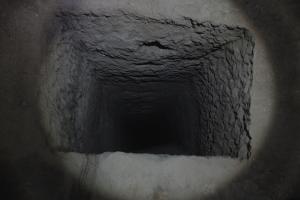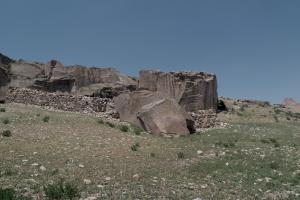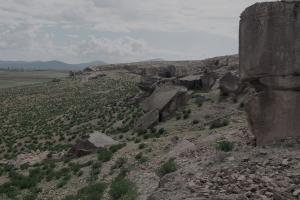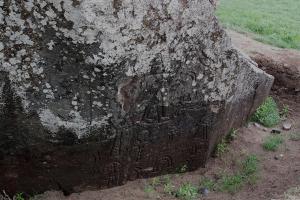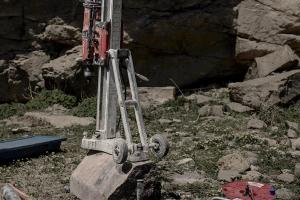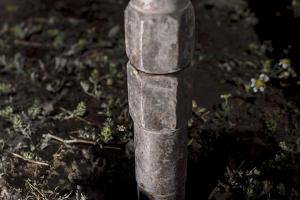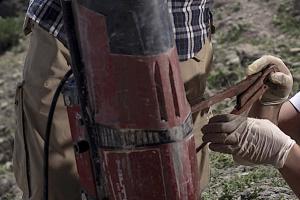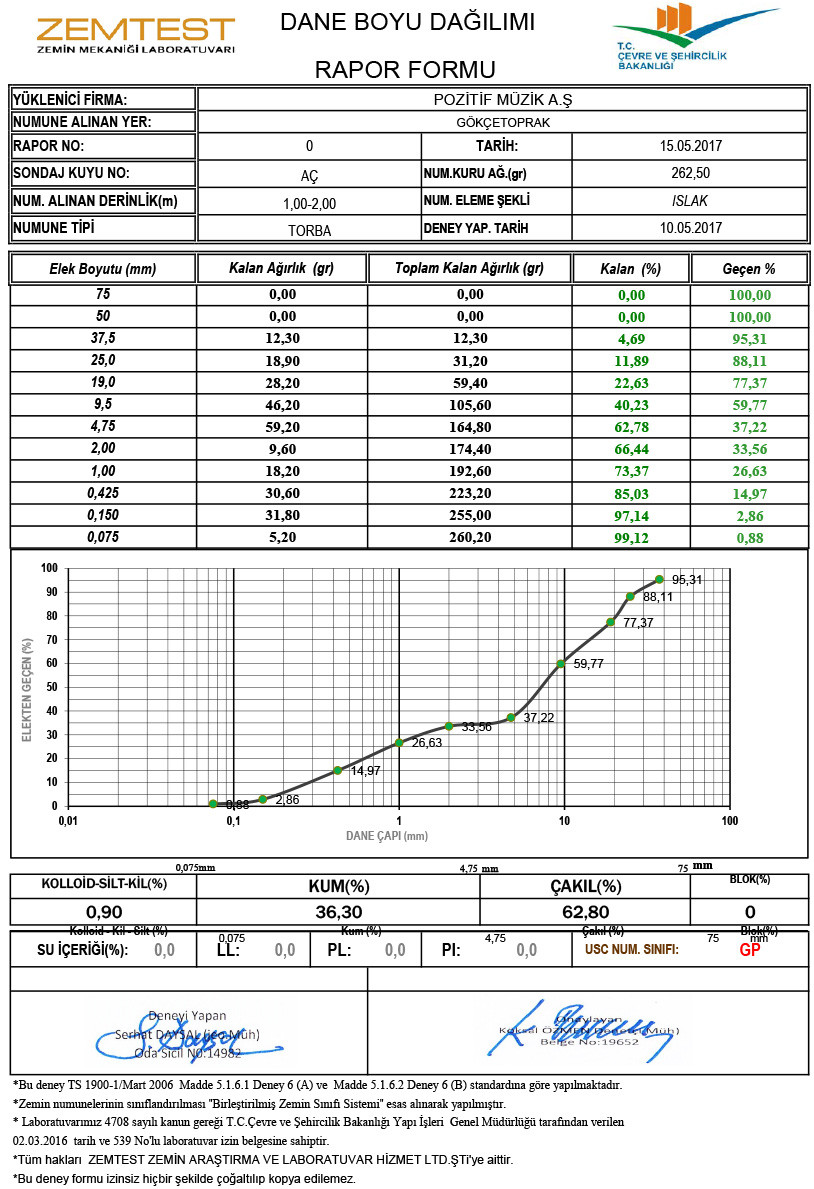
Gökçetoprak, also known as its Hittite Empire name, Suwasa, has seen human settlement since the ancient times. It continues to live at the edge of time with its ancient past. Suwasa still carries the marks of long past wars and struggles of existence. It is a hidden gem which enchants the visitors lucky enough to discover this village with its mystic atmosphere. As in all Anatolia, the transitions between religions that followed one another were so tight that concepts from different religions got mixed in together. Thus, the church connected to the underground system under the Suwasa Hill is surprisingly called The Church of Zeus. Because even though religions, saints and beliefs change sometimes with cultural continuity and sometimes by the strength of the sword, the peoples who live on this land remain the same since the Luwians, the first known people of Anatolia. From time to time tribes from other lands come to join the cultural blend of Anatolia but most of those societies that live on this land for more than ten thousand years still continue to exist here.
To keep this existence is not easy in Anatolia which is a bridge between Europe, Asia and Africa. Societies took full advantage of the conditions of the regions they lived in to better protect themselves. Cappadocia, made out of the ashes of super volcanos that were active nine million years ago has a soft texture which makes it possible to dig secret tunnels, build hidden monasteries and sometimes even connect all these constructions to each other via underground tunnels. The people of Cappadocia used this advantage to the maximum and created a well-protected, underground rock cut civilization as the esteemed researcher-scholar Roberto Bixio precisely describes: “Cappadocia had been the center of a unique, composite rock civilization in the Mediterranean basin....” (Bixio, De Pascale, 2009, S. 133)

Old maps showing Gökçetoprak, also known as its Hittite Empire name, Suwasa, with the underground city dug into the mudstone and agglomerate formations and the Suwasa Hill beneath which, connected to the underground system, there was the Church of Zeus.
Roberto Bixio in his same book also describes Gökçetoprak underground city which is a part of this civilization and consists of isolated underground halls: “The systems that make up the group of structures are designed for passive defense which depends on “isolated areas” protected by millstone doors, connecting at key points called ‘isolated halls’. Thus, a complicated and integrated defense system where an invading enemy can only move to an area after occupying the one before it. At the same time, to focus their defense where it is most needed a partial freedom of movement is supplied for the defenders.”

To defend their underground cities from the Arab raids, people of Cappadocia used large millstone doors to protect isolated halls where to stop and block the enemies. Photo by G. Bologna.
But it is not possible to know with which civilization these miraculous structures start with. Ignimbrite made of tuff (volcanic ash) erodes and falls of daily. For this reason the starting date of these structures is still unknown. The researchers agree that the underground refuges become more intense from the 8th to 10th centuries. Through this period Cappadocia land always stayed as a part of the Byzantine Empire. But it was exposed the frequent raids - 2-3 times per year (Canard, 1983) - by the Arabs from the neighboring Kilikya which they tore off the Byzantines in 703. The people created enormous underground systems to keep themselves safe from the Arab raids.
Deacon Leo in his description of Emperor Nikeforos Foceas’ campaign against arabs says: “Nikeforos (...) reached Cappadocia. (The people of this land) were then called cavemen because they went in and out of holes, cavities, labyrinths and they lived in caves and shelters.” (L. Diacre, quoted by Triolet, 1993)
Another fact that can’t be overlooked is that in the years of persecution against Christianity before its legal acceptance as a religion, Christians used the underground settlements for hiding. For this reason in many underground cities the tunnel systems connect to underground churches. And rock cut crosses can be observed in some rooms. The Christian people who had to spend long periods of time under the ground dug, food storages, water wells, stables, meeting halls and grave rooms in the rock. In many underground system the tunnels were narrowed to make passage more difficult.
Suwasa underground city has the church of Zeus, called church of Zevuz by the local people, for the same reason. Suwasa, which is accepted to be a cult center because of the religous architectural remains from different periods also has a surprising Zeus Stratios relief on the tunnel system numbered 4. The god is depicted wearing a coat down the waist and holding his left hand up, probably holding a scepter. The characteristics of depiction and iconography dates the relief to Hellenistic period. In this settlement Zeus is called with the Straitos epithet. Meral Akman explains in her book titled Zeus Cult in Cappadocia: “Epithets are adjectives given to gods by mankind as it suits them, to either strengthen their original duty or give them new functions... Each epithet describes a different function of the god. These take shape according to the general characteristics of the settlement or the society...the people who live in a strategic military point name the god with the epithet, Stration...The god in this epithet is named Zeus the Lord of the armies.”
Another interesting point about this relief is that the god does not have beard and his breasts are depicted prominently. When we think about the difficulty of people’s acceptance of a new cult, who had been blended in a thousands of years old religious adventure, it becomes easier to understand as Bernard Cook explains, that the Hellenistic patriarchal god who usurped the place of Anatolia’s Mother Goddess, was given breasts to console people.

Relief statue of a Hittite god present is in the underground village of Gökcetoprak. It shows probably Zeus Stratios, since in the Greek-Roman times his cult was widespread and the epithet Straitos means “Zeus the Lord of the armies”. South of the village one can find a late Hittite (8th century BC) rock inscription.
The finding that links Gökçetoprak to an earlier historical era is the Hittite inscription which has the name Suwasa carved on its north face with Luwi hieroglyphs. This Indo-European tribe that started to come into Anatolia after 2200 B.C., built an empire that could rival Egypt and Babylon in a short time. This empire which took nearly all the gods and goddesses of Anatolia as their own is built on rituals and cults. Open air worships and religious holidays that spread throughout the whole year was strictly practiced by the Imperial family following certain rules at certain times of the year. After the end of the Hittite empire, inscriptions about cult activities with names of high-level authorities carved on open air rock monuments cease to be seen. The only rock monument which belongs to this group, after the Hittite iron age is the Suwasa inscription. The inscription is situated on a plain, next to the flat hill (table mountain) near Gökçetoprak village (the rock that carries the inscription is thought to have broken off the hill). It is accepted that, the series of manmade holes on the rock are related to sacrifices and drinks that were used for offerings.
This inscription known as the Suwasa inscription has not been read until now because of being badly eroded. But the data at hand suggests that it consists of a description of some military activities that took place in the region. This can also be an answer to the question why Zeus was given the epithet of Straitos.
The village which still holds its mysteries was first discovered by a French team in 1989. First research was started in 1991 by a research team, Roberto Bixio and Stefano Saj, from Commissione Nazionale, Cavita Artificiali. This secretive village which seems to be on the crossroads of a magical civilization awaits its explorers.









